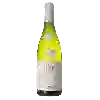
Winery Françoise ChauvenetMercurey
This wine generally goes well with poultry, beef or veal.
Food and wine pairings with Mercurey
Pairings that work perfectly with Mercurey
Original food and wine pairings with Mercurey
The Mercurey of Winery Françoise Chauvenet matches generally quite well with dishes of beef, veal or game (deer, venison) such as recipes of monkfish (anglerfish) à la sétoise, stuffed veal breast or roast venison with green pepper sauce.
Details and technical informations about Winery Françoise Chauvenet's Mercurey.
Discover the grape variety: Millot Léon
Interspecific crossing between the 101-14 Millardet and Grasset (vitis riparia X vitis rupestris) and the goldriesling obtained by Eugène Kühlmann (1858-1932) around 1911 and marketed around 1921. With these same parents, he obtained among others the Maréchal Foch. Léon Millot is still found in Canada, the United States, Switzerland, Germany, Belgium, Denmark, Sweden, the Netherlands, Poland and England. In France, where it was grown for a long time in Alsace, it is no longer grown in the vineyards, although it is listed in the Official Catalogue of Vine Varieties, list A.
Informations about the Winery Françoise Chauvenet
The Winery Françoise Chauvenet is one of of the world's great estates. It offers 129 wines for sale in the of Mercurey to come and discover on site or to buy online.
The wine region of Mercurey
The wine region of Mercurey is located in the region of Côte Chalonnaise of Burgundy of France. Wineries and vineyards like the Domaine François Raquillet or the Domaine Michel Juillot produce mainly wines red and white. The most planted grape varieties in the region of Mercurey are Pinot noir, Chardonnay and Gamay noir, they are then used in wines in blends or as a single variety. On the nose of Mercurey often reveals types of flavors of non oak, green pear or dark fruit and sometimes also flavors of tomatoes, white pepper or cassis.
The wine region of Burgundy
Bourgogne is the catch-all regional appellation title of the Burgundy wine region in eastern France ("Bourgogne" is the French name for Burgundy). Burgundy has a Complex and comprehensive appellation system; counting Premier Cru and Grand Cru titles, the region has over 700 appellation titles for its wines. Thus, Burgundy wines often come from one Vineyard (or several separate vineyards) without an appellation title specific to the region, Village or even vineyard. A standard Burgundy wine may be made from grapes grown in one or more of Burgundy's 300 communes.
The word of the wine: Suave
Said of a fine and unctuous wine.














